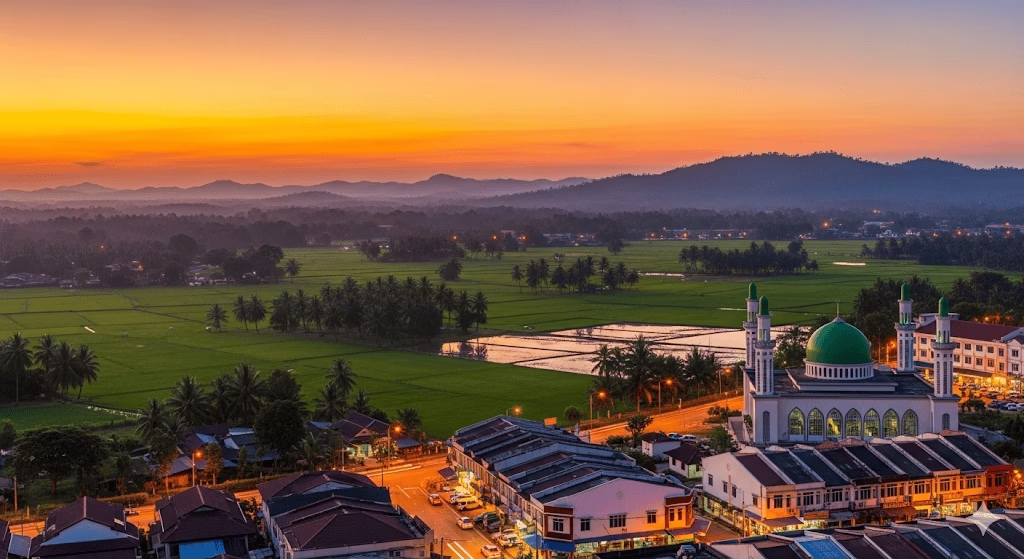Manggis

Introduction
Mangosteen, known locally as manggis, is revered throughout Malaysia and the wider Southeast Asian region for its refined taste, distinctive appearance, and deep cultural presence. Often called the “Queen of Fruits,” it represents a harmonious blend of tradition and modern relevance. Historically enjoyed as a seasonal delicacy, mangosteen today holds an important role in gastronomy, wellness-inspired product development, and Malaysia’s evolving agrifood identity.
Origin
Mangosteen (Garcinia mangostana) is believed to have originated in the dense tropical forests of the Malay Archipelago. Belonging to the Clusiaceae family, its natural habitat spans humid, lowland environments across Malaysia, Indonesia, and Brunei. Over time, regional trade expanded its cultivation to neighbouring countries including Thailand, Vietnam, and the Philippines. Slow-growing yet highly valued, the mangosteen tree continues to play a significant role in Malaysia’s fruit biodiversity and agricultural heritage.
Category
| Scientific Name | Family | Category | Type (Seasonality) |
|---|---|---|---|
| Garcinia mangostana | Clusiaceae | Tropical Fruit | Seasonal (Peak: May–August) |
Appearance
Mangosteen is instantly recognised by its deep purple rind and prominent green calyx. The fruit is round, compact, and typically measures between 5–7 cm in diameter. Its thick, leathery shell protects the soft, snowy-white flesh inside, arranged in distinct segments. The striking contrast of colours and its regal “crown” contribute to its status as one of the most visually appealing tropical fruits.
Popular Varieties
| Variety | Local Name | Distinctive Features | Region of Prominence |
|---|---|---|---|
| Standard Mangosteen | Manggis Kampung | Medium-sized, sweet, firm rind | Kedah, Perak, Pahang |
| Premium Grade | Manggis Gred A | Larger fruit, higher flesh ratio, fewer seeds | Johor, Melaka |
| Highland Mangosteen | Manggis Bukit | More aromatic, slightly thicker rind | Sabah, Sarawak |
Preparation
Mangosteen is enjoyed in a variety of consumption styles, including:
- Fresh fruit
- Dried snacks and freeze-dried products
- Desserts such as puddings, sorbets, and fruit tarts
- Occasional incorporation into regional salads or traditional recipes
- Beverages including juices, smoothies, and infused drinks
Equipment
- Paring knife or scoring knife
- Cutting board
- Serving bowl
- Juicer or extractor (for drinks)
- Food processor (for dessert applications)
Taste
Mangosteen delivers a refined balance of sweetness and gentle acidity. Its flavour includes floral undertones with hints reminiscent of lychee, peach, and citrus. The overall profile is clean, delicate, and naturally refreshing.
Texture
The interior flesh is soft, juicy, and creamy with minimal fibrousness. Each segment offers a melt-in-the-mouth sensation, particularly in premium-grade fruits with fewer seeds.
Aroma
Mangosteen carries a light, pleasant fragrance characterised by subtle floral and tropical notes. Its mild aroma complements its elegant flavour profile.
Cultural Significance
Mangosteen is deeply rooted in Malaysia’s cultural and social traditions. Commonly enjoyed during the local fruit season, it is a staple at markets, roadside stalls, and family gatherings. Historically regarded as a luxury fruit enjoyed by royalty, mangosteen remains a symbol of hospitality, generosity, and seasonal abundance.
Regional Cultivation
| State/Region | Famous For | Harvest Period |
|---|---|---|
| Kedah | Sweet kampung varieties | May–July |
| Perak | Large-scale orchards | June–August |
| Johor | High-quality fruits for export | June–September |
| Sabah | Highland aromatic types | July–October |
| Sarawak | Slightly larger and highly fragrant fruit | July–October |
Social Context
Mangosteen is closely associated with Malaysia’s communal and seasonal traditions. Families often purchase it in bulk from pasar tani, night markets, or orchard-side stalls. It is frequently shared during social visits and festive gatherings, marking the height of the tropical fruit season.
Nutritional Information (per 100g)
| Nutrient | Amount |
|---|---|
| Calories | ~73 kcal |
| Carbohydrates | 18 g |
| Protein | 0.4 g |
| Fat | 0.6 g |
| Fiber | 1.8 g |
| Vitamins | Vitamin C, B-complex |
| Minerals | Potassium, Magnesium, Manganese |
Health Benefits
- Contains natural antioxidants, particularly xanthones
- Supports immune function
- Promotes digestive health
- Helps maintain hydration due to high water content
- May reduce oxidative stress
- Contributes to overall wellness and vitality
Dietary Restrictions
- May not be suitable for individuals monitoring sugar intake
- Slight acidity may cause discomfort for those with gastric sensitivities
- Excessive consumption may lead to constipation due to tannins in the rind
Allergens
While uncommon, some individuals may experience oral irritation or sensitivity to tropical fruit compounds. Allergic reactions are generally mild.
Cost
- Standard varieties: RM8–RM12 per kg
- Premium-grade fruits: RM12–RM20 per kg
- Export-quality selections: RM20–RM30 per kg
Prices may fluctuate according to season, location, and fruit size.
Production & Export
Malaysia’s mangosteen industry focuses predominantly on domestic consumption, but export interest is rising. Key international markets include Singapore, Hong Kong, China, and selected Middle Eastern destinations. As global demand for exotic and antioxidant-rich fruits increases, mangosteen serves as a high-value crop that strengthens rural economies and enhances Malaysia’s profile as a producer of premium tropical fruits.
Symbolism
Mangosteen represents refinement, authenticity, abundance, and purity. Its white segments symbolise integrity, while its naturally crowned exterior reinforces its regal reputation. As Malaysia advances its agrifood sector, mangosteen remains a timeless icon reflecting both tradition and future readiness.








Comments are closed.